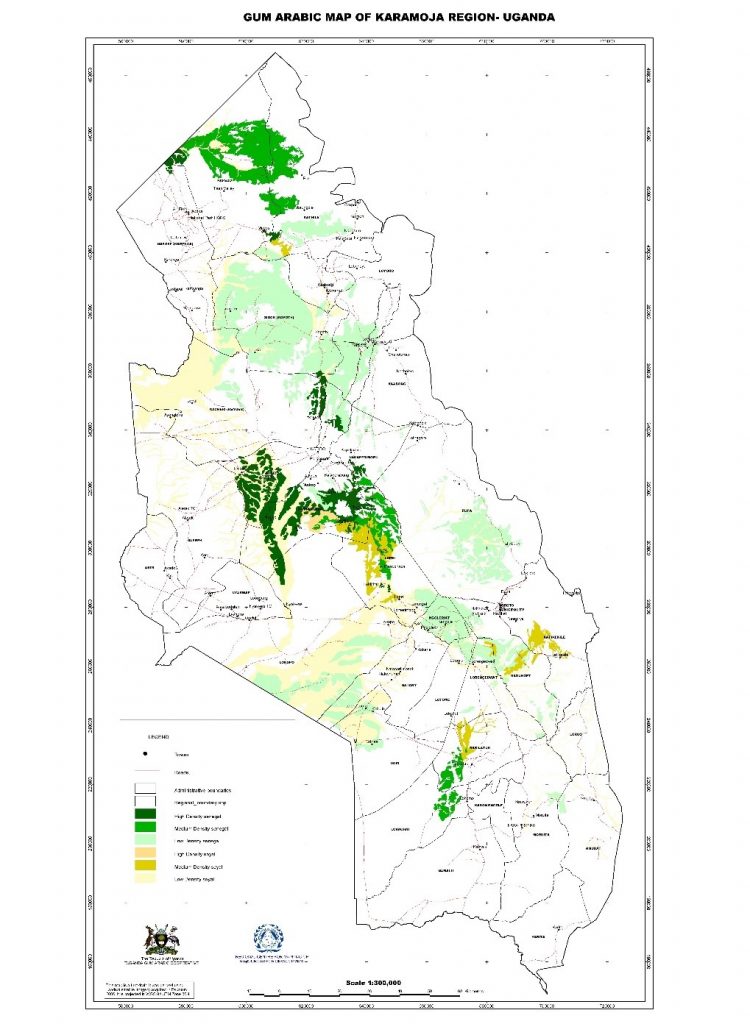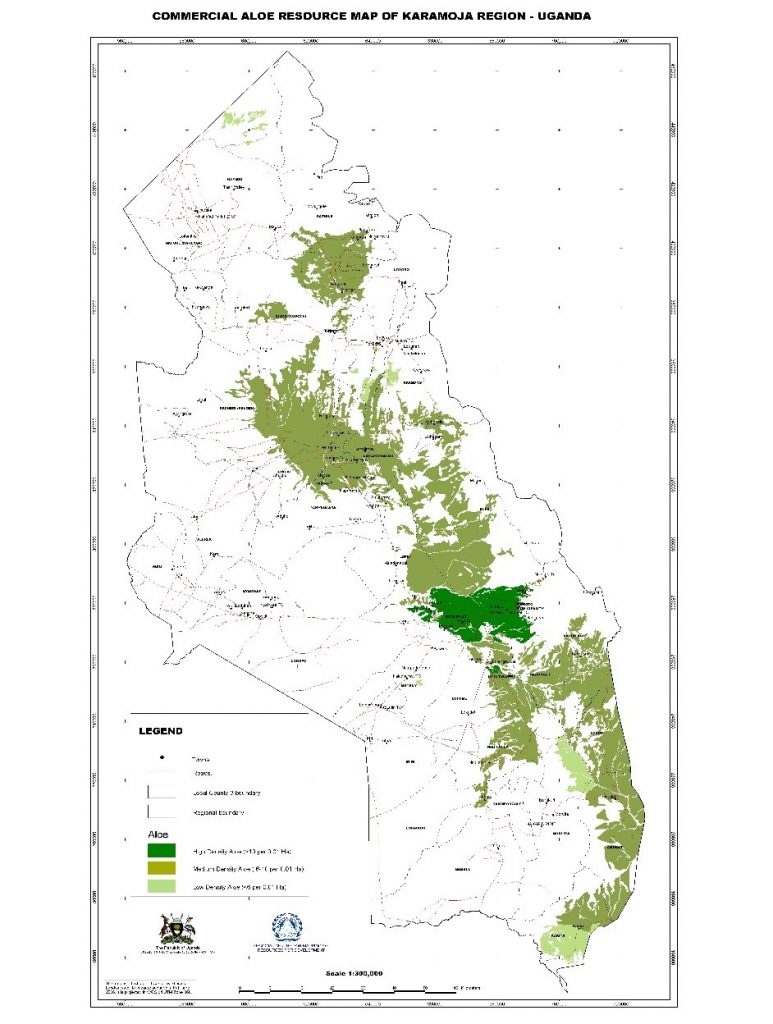The project was an initiative by the President through the AGOA office to empower local people in Karamoja Region improve livelihood from natural resources and mitigate insecurity. The project was undertaken between July 2006 and March 2008. The major activities involved identification of commercially viable tree/plant resources in the region, mapping and assessment of the resources and market intelligence.
At the end of the study, it was established that Karamoja Region has potential for the production of gum arabic and aloe gum. The main sources for gum arabic are Acacia senegal var. senegal while aloe gum is from Aloe tweediae. Resource maps were produced for both sources. Results of the resource mapping (Figure 1) and inventory showed that the estimated area of gum arabic resources in Karamoja Region is 648,147 ha with a production potential of 7,484 MT per year. Between the two species, A. senegal was more abundant and widespread. It was estimated to cover 373,542 ha with an estimated production potential of 4700 MT per year. A. seyal covered an estimated area of 274,605 ha with a potential production of 1784.06 MT per year.

Figure 1: Gum Arabic map of Karamoja Region – Uganda
The area covered by aloe resources in Karamoja Region is shown in Figure 2 Aloe resources covered an estimated area of 379,136 ha with a production potential of 35,915 MT per year. Kotido District had the highest amount of the resource (190,826 ha) and production potential (10,862 MT) followed by Moroto District which had 185, 957 ha and production potential of 18,958 MT per year.

Figure 2: Commercial Aloe Resource Map of Karamoja Region – Uganda Follow up activities involved linking the gum Arabic company to a major buyer in Europe as well as buyers of aloe gum in China and the Far East